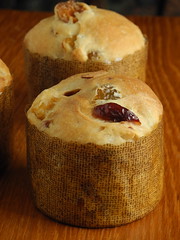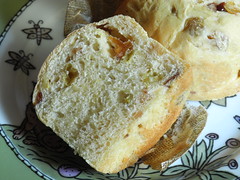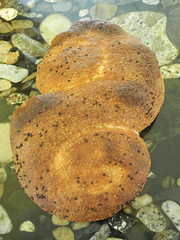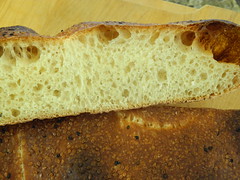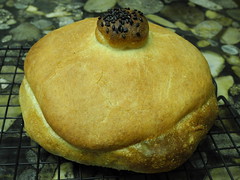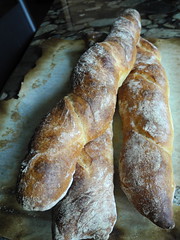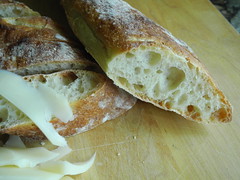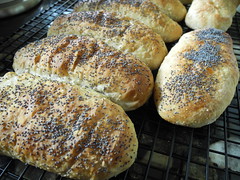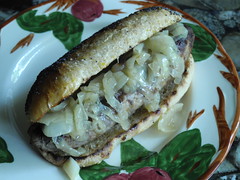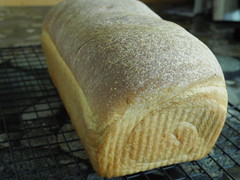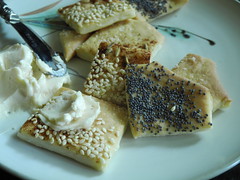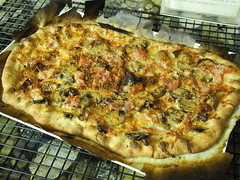 The BBA Challenge 2011 arrived at the "real" pizza recipe last week, labeled Pizza Napoletano. I'd also taken the suggestion earlier and made pizza from part of my pain à l'ancienne dough, and liked that version a lot--very chewy, flavorful crust. The pizza napoletano was not as good to my tastes, but part of that might be that I played with the recipe a bit.
The BBA Challenge 2011 arrived at the "real" pizza recipe last week, labeled Pizza Napoletano. I'd also taken the suggestion earlier and made pizza from part of my pain à l'ancienne dough, and liked that version a lot--very chewy, flavorful crust. The pizza napoletano was not as good to my tastes, but part of that might be that I played with the recipe a bit.I made a half recipe, aiming for 3 9-12" pizzas, and decided to replace half the flour with whole-wheat and used bread flour (the options were bread or unbleached AP) for the rest. I put one-third of the dough in the fridge for its overnight (well, a couple of days) rest, and froze the rest. Then it occurred to me that sister-in-law, younger niece, and the nephew would be back from their visit to grandparents in Arizona and could share the pizza, so the other two-thirds came back out of the freezer and went in the fridge as well.
 Day of pizza making, the dough came out to the counter to warm up and rise, then was easy to stretch into pizza rounds. Almost too easy--my crusts got a little too thin in places in the middle and I had a cracker crust there.
Day of pizza making, the dough came out to the counter to warm up and rise, then was easy to stretch into pizza rounds. Almost too easy--my crusts got a little too thin in places in the middle and I had a cracker crust there.  (Which was quite good, really, as it didn't quite burn and thus was toasty cheese and toppings on a crispbread.)
(Which was quite good, really, as it didn't quite burn and thus was toasty cheese and toppings on a crispbread.)Toppings were: tomato sauce, "Italian shredded cheese mix" (mozzarella, asiago, parmesan, provolone, and romano), and pepperoni
tomato sauce, caramelized onions, mushrooms, cheese mix, pepperoni on about a quarter of it
olive oil, caramelized onions, mushrooms, cheese mix, prosciutto
The pepperoni pizza suffered a serious accident after gluing itself to the pizza peel, requiring scraper-surgery to remove it, and ended up rather misshapen and uneven, alas. I have learned to be more generous with the semolina, or to just play it safe and use parchment paper...


There were no complaints from the niece and nephew on the crust (nephew got some bits of mushroom on one piece, requiring careful removal before the rest could be eaten), but no great kudos either. We all like the whole-wheat flavor, so I'm thinking I may try the pain à l'ancienne with half whole-wheat next time I'm making pizza and have the lead time to do that recipe.
